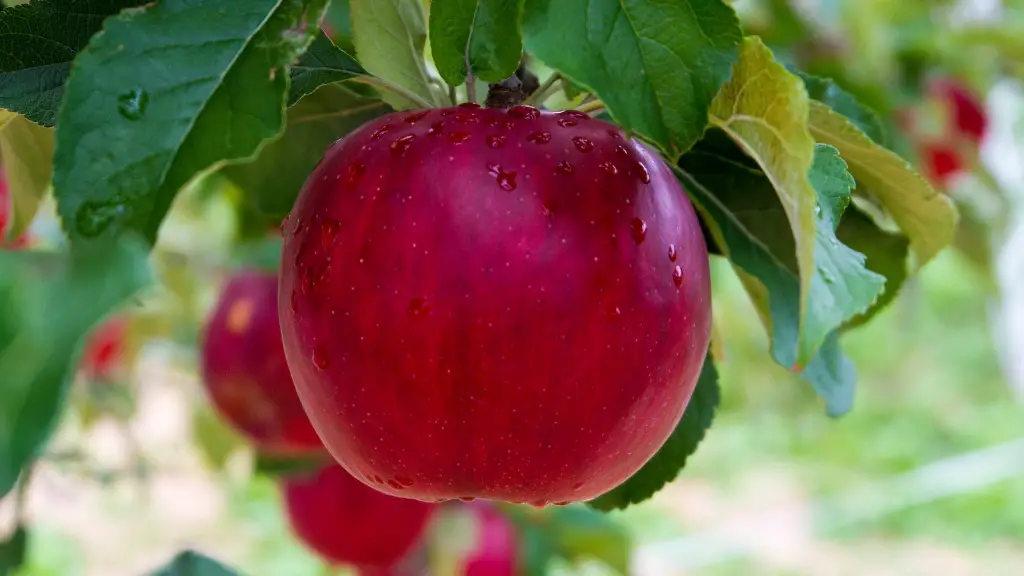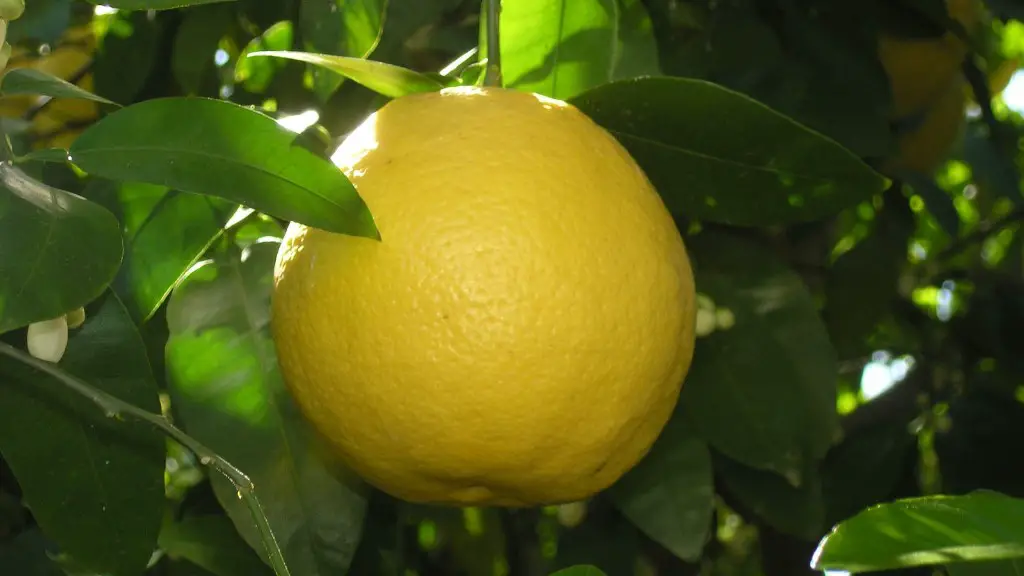The Basics of Avocado Fruit-Bearing
The avocado, or Persea americana, is an evergreen tree that is part of the laurel family, closely related to the bay laurel. Originating in the warm, subtropical regions of Central and South America, the avocado is today cultivated worldwide and is highly valued as an ingredient in many dishes around the world. With its high levels of monosaturated fats and other vitamins, the avocado is considered to be one of the healthiest fruits out there. But how long does it take till an avocado tree bears fruit?
Generally, it takes an average of three to five years for a single tree to bear fruit. However, this can vary greatly depending on a range of factors such as planting location, type of tree, and climate. For example, in tropical climates, it can take as little as 12 months for the tree to yield its first crop. In cooler climates, such as in some parts of the US, it can take even longer – up to 10 years in some cases.
Despite the widely varied growing times, it is generally accepted that an avocado tree will never bear fruit before 1.5 years old and won’t reach full maturity before seven years old. Additionally, a mature avocado tree will bear fruit twice a year – in January to June and again in August to November. Harvesting Avocados also requires patience and skill, as the fruit needs to be hand-picked when it is just ripe – not too early or too late.
Ensuring Your Avocado Tree Bears Fruit
In order to ensure the best possible results, it is essential that the required level of care and nourishment is given to an avocado tree in the years leading up to its first harvest. This includes providing the tree with adequate levels of water and organic fertilizers as well as protection from pests and diseases, preferably through organic solutions and practices. Additionally, the speed at which an avocado tree can begin to bear fruit can be optimized through correct pruning and training, with the help of an experienced gardener or tree-surgery professional.
It is also important to ensure the tree has plenty of access to sunlight, either through natural sunlight or through artificial lighting for trees in indoor spaces. Avocado trees also require adequate levels of nitrogen in the soil, which is better if provided through natural compost than through synthetic fertilizers. By taking all these factors into account, it is possible to reduce the wait time significantly and get maximum returns from your avocado tree.
The Perks of Having Your Own Avocado Tree
The final payoff of waiting three to five years for an avocado tree to bear fruits can be immense in more ways than just taste. Having access to a continuous harvest of avocado fruits directly from your own tree can mean a significant reduction in food costs and knowing you are using a safe and sustainable source of food. Additionally, the tree can also bring a much-needed boost to the local economy and create job opportunities for small-scale harvesters.
Furthermore, with careful planning, it is possible for an avocado tree to become much more than just a source of fresh fruits. With its stately height, lush foliage and profound ornamental value, an avocado tree can also function as an important addition to a landscape and make an outdoor space far more inviting and homely. In other words, an avocado tree can truly be a long-term investment in both taste and beauty.
Selecting the Right Type of Avocado Tree
When shopping for an avocado tree, it is important to select a tree that is right for your location and climate. Generally, two main categories of avocados tree are available – the Mexican type and the Guatemalan type. The Mexican type is better suited to warm climates and yields high oil content and small to medium-sized fruits. The Guatemalan type is well suited to cooler climates, produces larger fruits with lower oil content and is generally easier to grow.
There are also several hybrid varieties of avocados which combine traits from both Mexican and Guatemalan types, as well as newly developed varieties which have been specifically bred for higher yields and better pest resistance. By identifying and selecting the right tree for your climate, you can ensure that it can bear fruit as soon as possible.
The Role of Imported Fruits in the Avocado Industry
As more and more people incorporate avocados into their diet and the demand continues to go up, many growers are turning to imported fruits to meet this extra demand. These imported fruits are often grown in faraway countries and imported into North America, Europe and other parts of the world. The downside of this is that many of these imported fruits may not have been grown according to the same standards as locally grown fruits, resulting in a decline in both the taste and quality of the fruits.
Additionally, the long-term storage of these imported fruits due to the distance from their place of origin can also lead to a decrease in their nutritional value and freshness. As a result, it is important for all avocado lovers to only purchase fruits from local, trusted orchards and farms to ensure the best taste and highest nutritional value.
Do-It-Yourself Farming of Avocado Fruits
As mentioned previously, a single avocado tree can bear fruit twice a year, allowing for a continuous supply of the nutritious super-fruit. With careful attention and continual effort, a single tree can produce hundreds of fruits each year. This makes the avocado a great fruit to grow in an individual’s backyard or garden. Furthermore, as the tree matures, some of its produce can even be further used for propagation and grafting, which can result in more trees being grown and a larger yield of fruits.
If you are looking to grow your own avocados, there are plenty of resources available online to help you. From step-by-step guides on planting and caring for your tree to in-depth tutorials on harvesting the fruits and propagating the tree, there is a lot of information available to help you get the best results and reap the rewards.
Avocado Trees as a Health-Conscious Choice
Besides its famous taste, the avocado is also packed full of essential minerals and vitamins, making it an essential part of a health-conscious diet. With a single avocado containing 20 vitamins and minerals, over 25% of daily intake for vitamin B6 and vitamin C, and about 18% of daily intake for vitamin E, it is easy to see why avocado is becoming increasingly popular amongst health-conscious individuals.
A single avocado fruit contains roughly 160 calories, 2 grams of protein and 15 grams of healthy fat, making it an ideal food for individuals looking to watch their calorie intake or maintain a healthy weight. Additionally, the antioxidants in avocados may also provide powerful protection against high cholesterol and other heart diseases, making it an essential addition to both the taste buds and the body.
From Planting to Harvesting: Managing Your Avocado Tree
Managing an avocado tree, from planting to harvesting, requires patience and effort. Thorough research, specific care and nurturing, as well as environmental management, will all play a part in ensuring the avocado tree bears abundant fruit twice a year. Additionally, the right variety of tree should be chosen according to the climate to provide a faster bear timeline. The payoff of these efforts can be immense in terms of both taste and nutrition.
Buying Locally Grown Avocados: The Last Piece of the Puzzle
The last piece to the puzzle of having your own avocado tree is purchasing fresh, locally grown fruits. By choosing locally grown fruits for your nutritional needs, you are ensuring that you are getting the freshest, most nutritious produce and providing support to small-scale farmers and orchards in the process. With this in mind, it’s time to get your hands on some locally grown avocados and enjoy the taste and nutrition of this super-fruit.
The Bright Future of Avocado Farming and Cultivation
Avocado-farming and growing practices are constantly changing and evolving as the industry advances and new technologies become more prevalent. This trend is likely to increase in the coming years, as further research reveals more about the science of avocado fruit-bearing and how to best optimize yields and quality. With that in mind, the future of avocados is looking bright.
From innovative technology used to track yields and monitor cultivation practices to new hybrid varieties of trees with higher yields and better pest resistances, avocado-growing is becoming an ever-advancing field with a lot of potential. With new developments promising to make the cultivation of this super-fruit even easier and more rewarding, the future looks ripe with possibilities.


